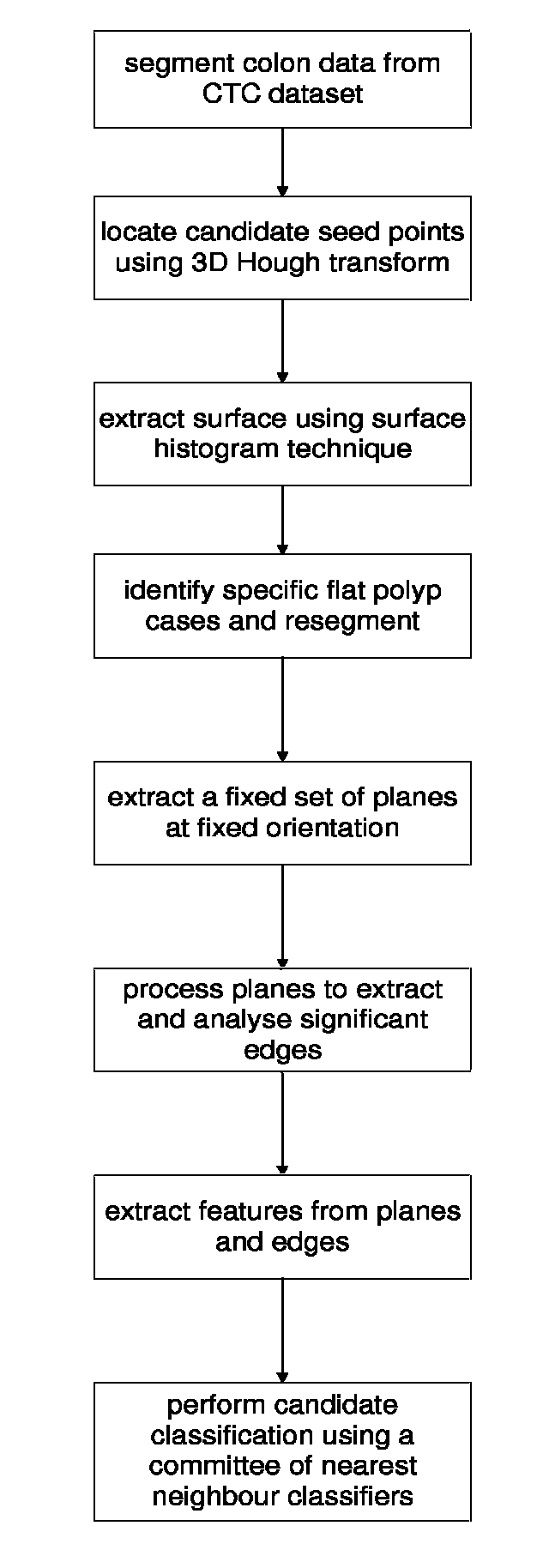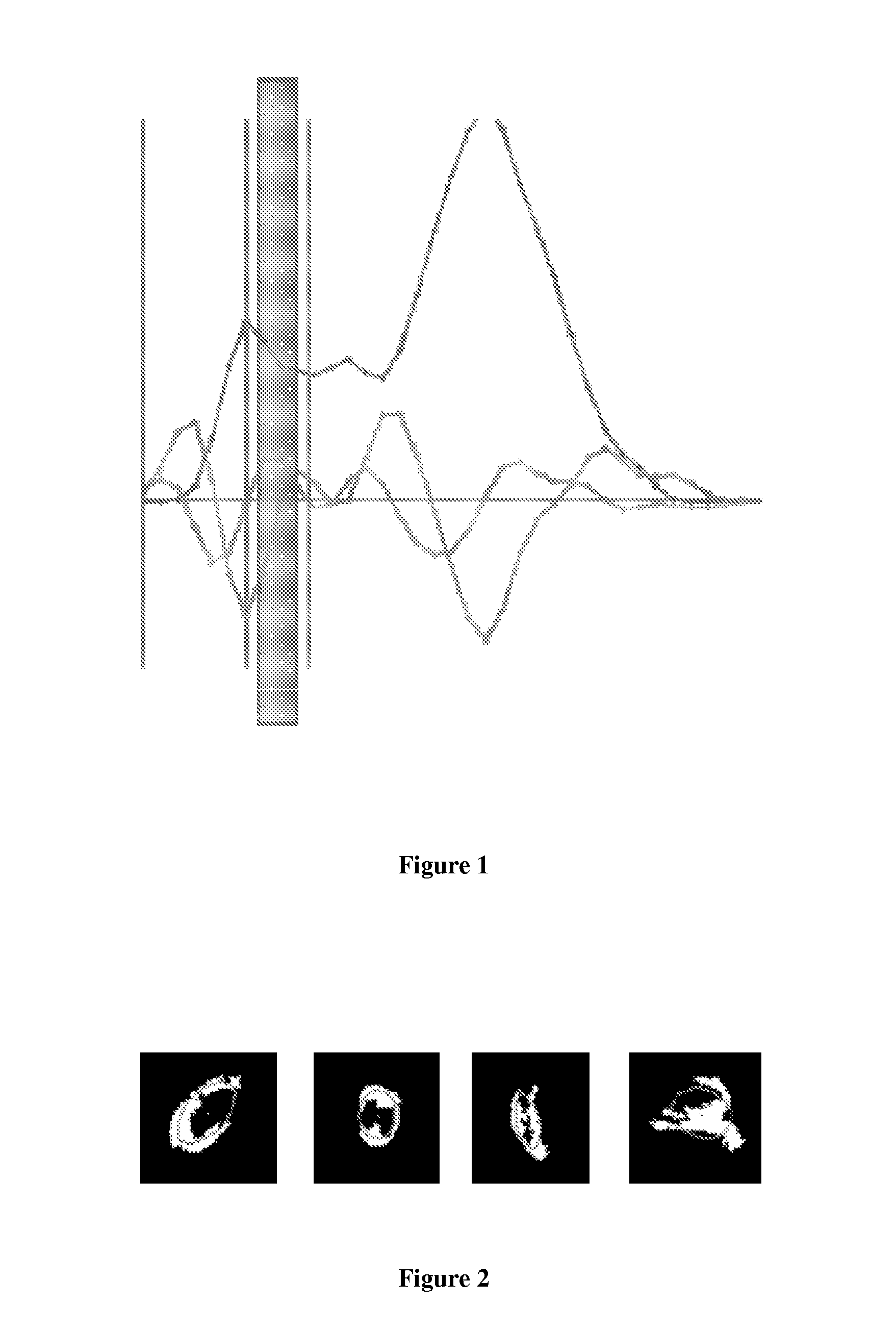Method for identifying colon polyps in a computed tomography colonography dataset
a computed tomography and colon polyp technology, applied in image data processing, character and pattern recognition, instruments, etc., can solve the problems of low sensitivity, difficult detection, and inability to identify flat polyps using the features utilised in current methods for the detection of polyps
- Summary
- Abstract
- Description
- Claims
- Application Information
AI Technical Summary
Problems solved by technology
Method used
Image
Examples
Embodiment Construction
[0120]The operation of the technique has been validated on a database of CTC scans from a number of sources, containing manually flagged real flat lesions, artificial phantom data, and synthetic polyps, artificially generated and digitally inserted into the datasets, designed to mimic the characteristics of the real lesions. This use of synthetic polyps is necessary due to the small number of real polyps which have been flagged in the test databases of CTC scans. This situation is unsurprising in light of the fact that flat lesions are currently so difficult to detect.
[0121]The detection results presented in Table 1 illustrate the effectiveness of the procedure in identifying flat lesions. The results shown are for a series of tests conducted using CT scans of a custom phantom, designed to accurately mimic the appearance and characteristics of a real CTC examination. In this way it is possible to conduct many tests without any exposure of subjects to the ionising radiation associate...
PUM
 Login to View More
Login to View More Abstract
Description
Claims
Application Information
 Login to View More
Login to View More - R&D
- Intellectual Property
- Life Sciences
- Materials
- Tech Scout
- Unparalleled Data Quality
- Higher Quality Content
- 60% Fewer Hallucinations
Browse by: Latest US Patents, China's latest patents, Technical Efficacy Thesaurus, Application Domain, Technology Topic, Popular Technical Reports.
© 2025 PatSnap. All rights reserved.Legal|Privacy policy|Modern Slavery Act Transparency Statement|Sitemap|About US| Contact US: help@patsnap.com



